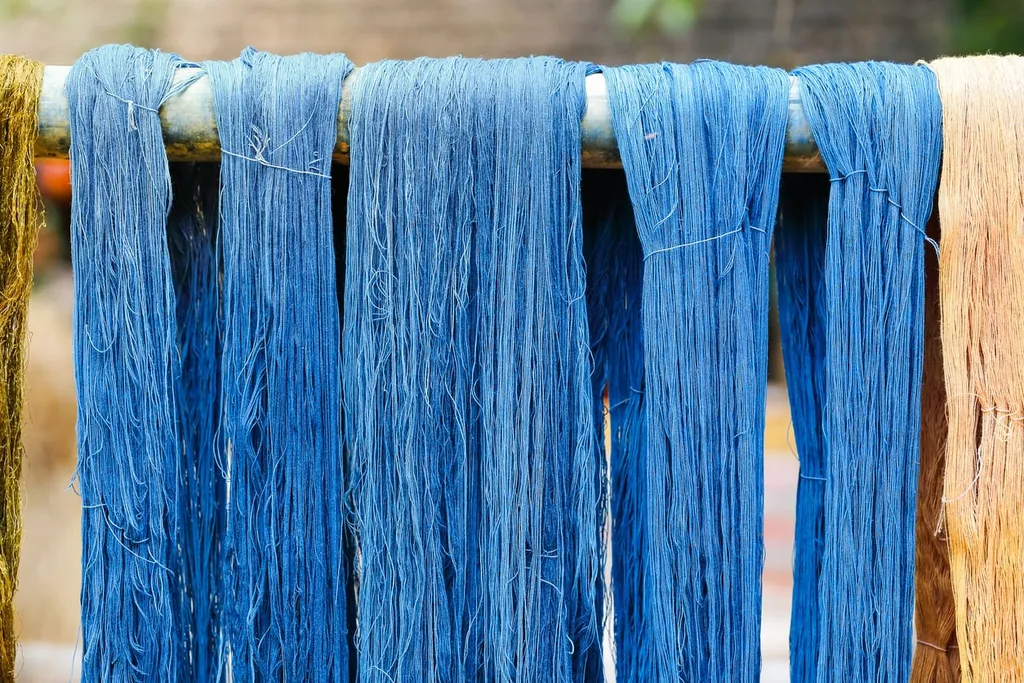Crafting Natural Indigo Dye for Vibrant Textile Art and Sustainable Fashion
The Art and Science of Making Indigo
Indigo, the deep blue dye derived from the leaves of the indigo plant, has been captivating artists, artisans, and cultures for centuries. Its ability to produce vibrant colors has made it one of the most sought-after natural dyes throughout history. From ancient civilizations to modern textile industries, the art of making indigo is a fascinating blend of nature, chemistry, and craftsmanship.
The indigo plant, scientifically known as *Indigofera*, thrives in tropical and subtropical regions. The most commonly used species for dyeing is *Indigofera tinctoria*, but there are over 700 species of indigo plants worldwide. The leaves of these plants are rich in a compound called indican, which is converted into indigo during the dyeing process. The journey from plant to pigment is complex and requires a sequence of steps that showcase both the science and artistry involved in dye production.
Harvesting
The process begins with the harvesting of the indigo leaves. Farmers carefully select healthy leaves, as the quality of these leaves directly impacts the dye's final hue and consistency. In traditional practices, leaves are harvested during specific seasons when their indican content is at its highest. The leaves are then bundled and prepared for fermentation, a crucial step in transforming them into dye.
Fermentation
Once harvested, the leaves undergo fermentation. This is typically done by soaking them in water in a large vat or container. Over several days, bacterial action converts indican into indoxyl. This step is crucial, as it effectively releases the indigo dye locked within the plant. Fermentation is both a science and an art; the duration and conditions (temperature, air exposure) can significantly influence the dye's color and strength.
After fermentation, the mixture is aerated. As oxygen reacts with the indoxyl, it oxidizes into indigo, which has a characteristic blue color. At this stage, the dye appears yellow-green in the vat, but as it is exposed to air, it transforms into the rich blue that is its signature hue.
Extraction
making indigo

The next step is extraction. The fermented mixture is agitated to facilitate the settling of indigo particles. The solids are removed, and the remaining liquid is often discarded. The indigo that settles at the bottom is collected and dried. This process can take several days, during which the indigo will form a solid cake-like substance known as indigo granules.
Dyeing Process
Once the indigo is dried and processed, it can be used for dyeing textiles. The dye must be reconstituted before use, as it is no longer soluble in water in its solid form. To prepare for dyeing, indigo granules are dissolved using a reducing agent, typically sodium hydrosulfite, in a heated dye bath. This process is repeated until the desired concentration and shade of blue is achieved.
The dyeing process itself involves immersing fabrics, typically cotton or wool, into the dye bath. The fabric is soaked and then exposed to oxygen, causing the dye to bond with the fibers. This is a crucial moment—both the duration of immersion and exposure to air will dictate the final color. A deeper blue is achieved by repeating the dyeing process several times.
Cultural Significance
Indigo is not just a color; it's a symbol deeply embedded in various cultures. In regions such as West Africa, India, and Japan, indigo dyeing has historical and cultural importance. For instance, in Japan, the traditional art of shibori (tie-dye) utilizes indigo dye for its unique patterns and textures. In India, the craft of bandhani and other resist dyeing methods showcase the versatility of indigo, celebrating its rich history.
Moreover, the revival of natural dyes, including indigo, in modern fashion presents sustainable alternatives to synthetic dyes. Many contemporary designers are opting for eco-friendly practices, emphasizing the importance of preserving traditional dyeing techniques while also caring for the environment.
Conclusion
The process of making indigo is a beautiful synthesis of art, science, and cultural heritage. With every step, from the harvesting of leaves to the dyeing of fabrics, the deep blue of indigo tells a story. As we embrace sustainable practices in fashion and art, the ancient craft of indigo dyeing provides a meaningful connection to our past while paving the way for a more environmentally conscious future. Whether admired in a pair of timeless jeans or an intricately patterned garment, indigo continues to inspire and enchant.
-
The Timeless Art of Denim Indigo Dye
NewsJul.01,2025
-
The Rise of Sulfur Dyed Denim
NewsJul.01,2025
-
The Rich Revival of the Best Indigo Dye
NewsJul.01,2025
-
The Enduring Strength of Sulphur Black
NewsJul.01,2025
-
The Ancient Art of Chinese Indigo Dye
NewsJul.01,2025
-
Industry Power of Indigo
NewsJul.01,2025
-
Black Sulfur is Leading the Next Wave
NewsJul.01,2025

Sulphur Black
1.Name: sulphur black; Sulfur Black; Sulphur Black 1;
2.Structure formula:
3.Molecule formula: C6H4N2O5
4.CAS No.: 1326-82-5
5.HS code: 32041911
6.Product specification:Appearance:black phosphorus flakes; black liquid

Bromo Indigo; Vat Bromo-Indigo; C.I.Vat Blue 5
1.Name: Bromo indigo; Vat bromo-indigo; C.I.Vat blue 5;
2.Structure formula:
3.Molecule formula: C16H6Br4N2O2
4.CAS No.: 2475-31-2
5.HS code: 3204151000 6.Major usage and instruction: Be mainly used to dye cotton fabrics.

Indigo Blue Vat Blue
1.Name: indigo blue,vat blue 1,
2.Structure formula:
3.Molecule formula: C16H10N2O2
4.. CAS No.: 482-89-3
5.Molecule weight: 262.62
6.HS code: 3204151000
7.Major usage and instruction: Be mainly used to dye cotton fabrics.

